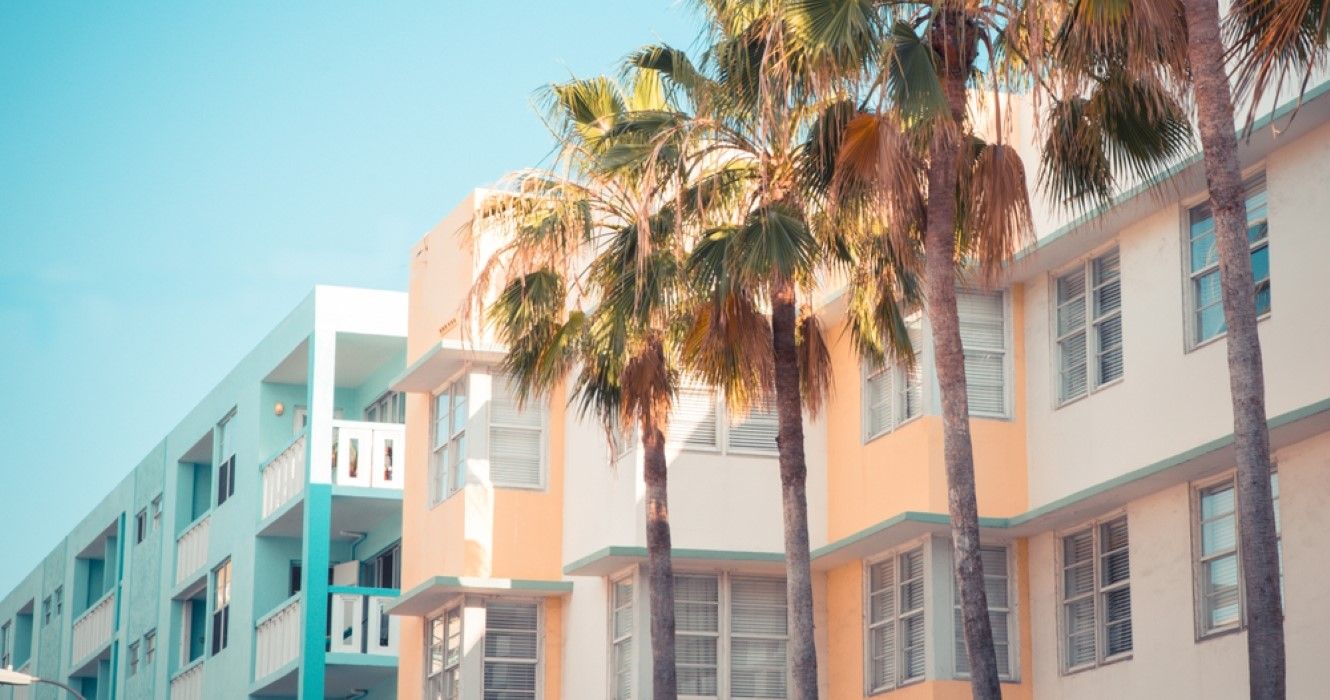To most travelers, Miami means sunshine, beaches, and warm ocean water, fine dining and high-end shopping, art deco-style hotels, and a bustling cruise port where thousands of board ships to destinations in the Caribbean and beyond. Historical sites are unlikely to be top of mind, but the city has a fascinating history, and much of it is recorded not only in museums but in the buildings, churches, and parks tourists see every day.
Originally inhabited by Native Americans, notably the Tequesta, Miami was incorporated in 1896 after the United States bought the land from Spain, which had claimed it 200 years earlier. The city's Native American roots can be seen in several locations, including Arch Creek Park, in North Miami Beach, once the site of a much-used trail long before even the Spanish arrived. And then there's the Miami Circle National Historic Landmark, an important Native American archeological site dating back some 2,000 years and located in downtown Miami at the head of the Miami River. But the more recent historical aspect of Miami most obvious to visitors is architectural in the city's impressive art deco district.
South Beach Hotels, Shops Designed In Classic Art Deco Style
Originating in France in the early 20th century, art deco architecture, known for its geometric shapes, simple lines, and bold colors, reached its pinnacle in the U.S. in the 1920s and 1930s. Miami's Art Deco Historic District is in South Beach, along Ocean Drive and on Collins and Washington avenues. Many boutique hotels were built in the art deco style, and tourists can stroll through the district for up-close views of the architecture. Some public transit routes on the Miami Trolley include Collins Avenue for those who would rather not walk.
Some of the best examples of art deco include:
Hotel Breakwater, on Ocean Drive, is widely considered the icon of the art deco district, with its bright blue neon sign. Built in 1936 with sleek and colorful lines, the boutique property offers 100 guest rooms in the heart of the district.
The Carlyle, on Ocean Drive, with its famous green and white exterior, houses residential condos and is known for its star factor since it was featured in hit movies such as “The Birdcage” and “Scarface.” The building opened in 1941.
The Webster Miami, dating from 1939, was designed by Henry Hohauser, considered one of the leading art deco architects of his day. The Collins Avenue building is known for its classic art deco look and today houses several high-end clothing boutiques after earlier operating as a hotel.
The Delano South Beach, on Collins Avenue, was said to be the tallest building in Miami Beach when it was built in 1947. Known for its four-sided art deco tower, the property was named for President Franklin Delano Roosevelt. The Delano has been closed since 2020, but visitors can admire the exterior of the historic building.
Other must-see art deco classics are the Bass Museum, one of the oldest art deco buildings in Miami Beach, constructed in Collins Park in 1930; the Miami Beach Post Office, on Washington Avenue, dating from 1937; and the Betsy Hotel, built in 1942 by L. Murray Dixon, another art deco pioneer.
Tourists can stop by the Art Deco Welcome Center to sign up for guided tours and learn more about the history of the architectural style. The center also features the Art Deco Museum, which offers exhibits, lectures, and workshops tied to the style. The center is on Ocean Drive.
Explore The Gilded Age At Vizcaya Museum And Gardens
The Vizcaya Museum and Gardens, in the Coconut Grove section of Miami, dates from the early 20th century and was formerly owned by industrialist James Deering. The waterfront mansion represents the Gilded Age and is best known for its grand Italian Renaissance gardens. Designed in the Mediterranean Revival architecture style, the 70-room main house features gilded panels, fresco ceilings imported from Italy and France, marble floors, stain-glass doors, and a trove of historical items dating from the 15th century.
The museum is owned by Miami-Dade County. Tickets are required for entry.
There's a so-called hidden historical gem in North Miami Beach. It's the Ancient Spanish Monastery, originally built in Segovia, Spain, then dismantled and shipped to the United States in 1925 by industrialist William Randolph Hearst. The monastery had been occupied by Cistercian monks for several hundred years. Hearst bought the cloisters and some outbuildings and sent them to America, where they were rebuilt stone by stone. Located on Dixie Highway, the monastery is open to the public and available for weddings.
Another religious site also has historical significance: the Gesu Catholic Church, the oldest church in Miami. Established by wealthy landowners in 1872, the church was relocated to its present site on northeast 2nd Street in 1896. Visitors will find crystal leaded windows and altars made of Italian marble. The building is included in the National Register of Historic Places.

